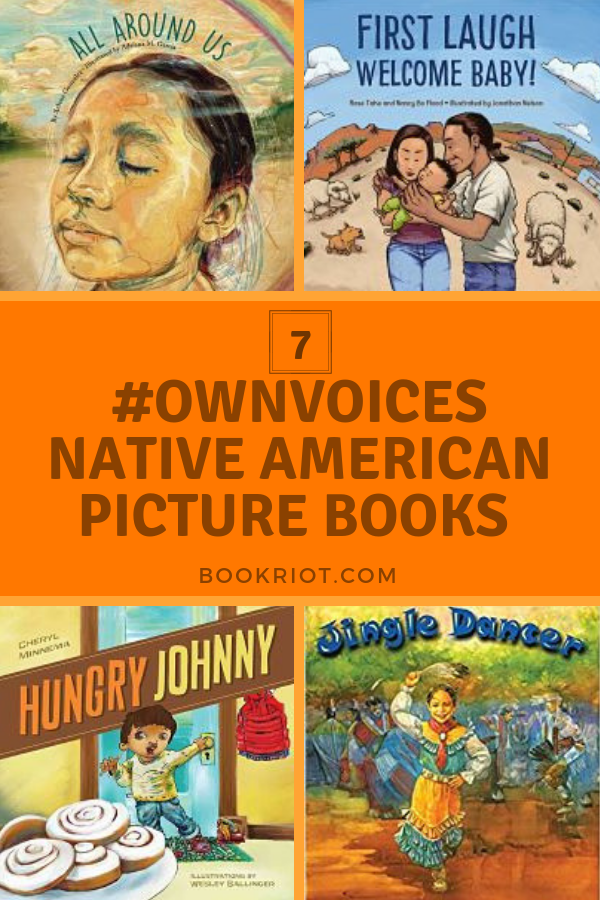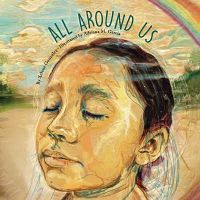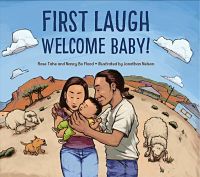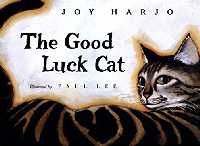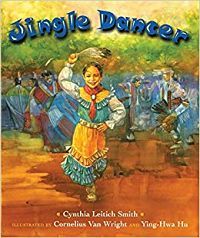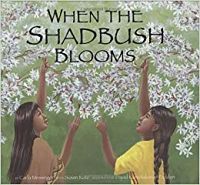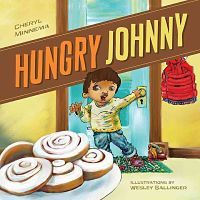When I started my research for this post, I immediately went to my library’s website to request my favorite Native American picture books from childhood. I was horrified when I discovered book after book written by white authors, mostly men. Every. Single. Book. While there’s not necessarily anything wrong with books written outside the author’s cultural experiences—given that the author does their research—it becomes a problem when those books are the ones that predominantly get published and receive the awards and accolades over #ownvoices books. I’m also very aware that I am a white blogger writing about #ownvoices Native American picture books. Because of that, and because it’s important to support #ownvoices bloggers as well as authors, I encourage you to check out Debbie Reese’s phenomenal blog: American Indians in Children’s Literature. Debbie Reese has compiled an amazing list of books and reviews that she constantly updates. The American Indian Youth Literature Award is also an amazing place to find new #ownvoices Native American books to read.
7 #Ownvoices Native American Picture Books
Too often we think of Native Americans in the past. These seven picture books depict Native Americans in the present. I included tribal information for the authors and illustrators when I could find the information.
All Around Us by Xelena Gonzalez, Illustrated by Adriana Garcia
A lovely story about the relationship between a little girl and her grandfather, as he teaches her about the circles that make up existence. The vibrant illustrations depict their relationship as they go about their everyday routine in vivid colors and swirls. This picture book is so beautiful and touching and award-worthy. Look at that cover! Xelena Gomex is from the Tap Pilam Coahuiltecan Nation.
Grandmother’s Pigeon by Louise Erdrich, illustrated by Jim LaMarche
While Louise Erdrich’s more well-known adult fiction tends to be dark and complicated, her children’s books are delightful and still rich in character. In Grandmother’s Pigeon, at a beach trip a girl’s grandmother rides away on the back of a porpoise to go traveling the world. Once back home, bird eggs hatch into extinct passenger pigeons, in grandmother’s room, of course. This picture book is a bit denser than most, so I recommend it for older kids, in the 7–8 year old range. Louise Erdrich is an enrolled member of the Turtle Mountain Band of Chippewa Indians.
First Laugh: Welcome, Baby! by Rose Ann Tahe and Nancy Bo Flood, Illustrated by Jonathan Nelson
I can’t even begin to describe how perfect and adorable this book is. It didn’t turn up in my internet research, but when I went to work a few days ago (at a bookstore), the children’s book director had set this aside for me! And it was love at first sight. In Navajo custom, a baby celebrates becoming a member of the Navajo tribe on the day of its first laugh. In this picture book, a Navajo family eagerly await their new baby’s first laugh. I love that the illustrations depict the family in modern settings and keeping Navajo traditions. Rose Ann Tahe was born into the Naaneesh’t’ezhi Tachii’nii nish’li (The Charcoal Streaked Division of the Red Running Into the Water Clan), born for Ashiihi bashish’chiin (Salt People Clan). Jonathan Nelson is Navajo, of the Kiiyaa’áanii (Towering House Clan) and Naakai Dine’é (Mexican Clan). Rose Ann Tahe died before the book could be published, and Nancy Bo Flood finished it for her.
The Good Luck Cat by Joy Harjo, Illustrated by Paul Lee
The cat Woogie has had a super hard life and already used up eight of his nine lives. But now he has the perfect little girl and family for owners—what could go wrong? Joy Harjo is an amazing poet, and while she writes this picture book in prose, her lyrical writing skills still show. The dark-toned illustrations are vivid and realistic, and perfectly capture the mischievous and lovable Woogie. Joy is a member of the Mvskoke Nation.
Jingle Dancer by Cynthia Leitich Smith, Illustrated by Ying-Hwa Hu and Cornelius Van Wright
I first came across this book in college, when I was researching for a presentation on the necessity of teaching with own voices Native American literature in elementary schools (back when hashtags weren’t a thing). It’s just as charming and special as a reread. In Jingle Dancer, Jenna dreams of dancing the jingle dance, just like her grandmother. But she doesn’t have any jingles for her dress. By helping her friends and relatives, she acquires enough jingles to dance. This books celebrates helping others in addition to honoring Native American culture. Cynthia Leitich Smith is a member of the Muscogee (Creek) Nation.
When The Shadbush Blooms by Carla Messinger and Susan Katz, Illustrated by David Kanietakeron Fadden
When the Shadbrush Blooms tells side-by-side stories of two Lenape tribe girls—one from the past, one from the present. In detailed illustrations, it shows how both families structure their lives around the changing seasons. Carla Messinger is a descendant of the Lenape (Delaware) Indians (Turtle Clan). Mohawk David Kanietakeron Fadden is from the Wolf Clan.
Hungry Johnny by Cheryl Kay Minnema, Illustrated by Wesley Ballinger
This is the only book on the list I haven’t read. I ordered it from the library and it has yet to come in. But it looks adorable, and I am also hungry and like food. Cheryl Kay Minnema is of the Mille Lacs Band of Ojibwe. Looking for more diverse picture books? Check out these 30 diverse children’s books. What are your favorite #ownvoices Native American picture books?
